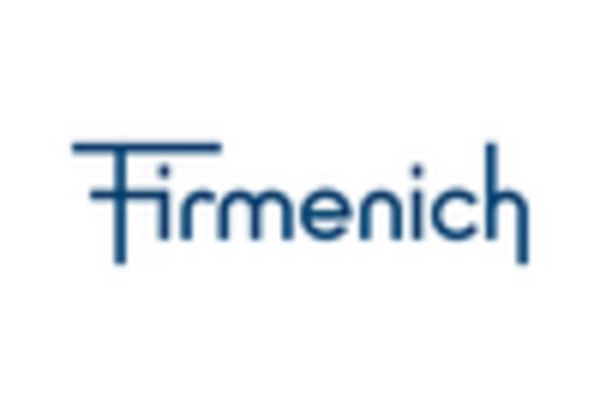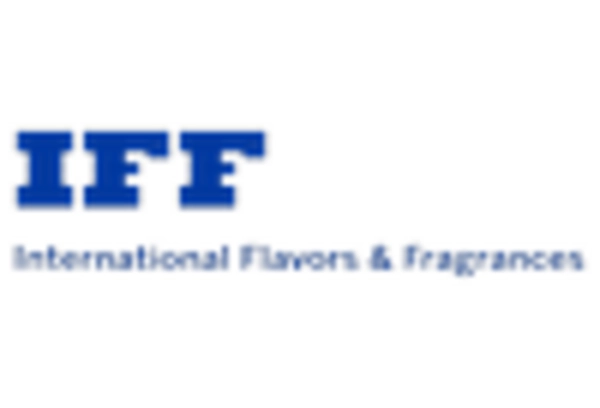Emergence of Niche Fragrance Brands
The emergence of niche fragrance brands is reshaping the landscape of the fragrance ingredients market. These brands often focus on unique scent profiles and artisanal production methods, appealing to consumers seeking individuality and exclusivity. In 2025, niche brands are projected to capture approximately 15% of the market share, reflecting a growing trend towards personalized fragrance experiences. This shift challenges traditional fragrance houses to innovate and differentiate their offerings. The fragrance ingredients market must recognize the potential of niche brands and consider collaborations or acquisitions to enhance their product portfolios. As consumer preferences continue to evolve, the industry may need to adapt to the increasing demand for distinctive and bespoke fragrance options.
Expansion of the Home Fragrance Segment
The home fragrance segment is witnessing substantial growth, contributing significantly to the fragrance ingredients market. In 2025, this segment is expected to represent nearly 20% of the total market share, driven by an increasing interest in creating pleasant living environments. Products such as scented candles, diffusers, and air fresheners are gaining popularity as consumers seek to enhance their home ambiance. This trend is further supported by the rise of home decor and lifestyle influencers who promote the use of fragrances in home settings. The fragrance ingredients market must capitalize on this trend by developing innovative home fragrance solutions that cater to diverse consumer preferences and enhance the overall sensory experience.
Rising Consumer Demand for Personal Care Products
The fragrance ingredients market experiences a notable boost due to the increasing consumer demand for personal care products. As individuals become more conscious of their grooming habits, the market for perfumes, deodorants, and body sprays expands. In 2025, the personal care segment is projected to account for approximately 30% of the overall fragrance ingredients market. This growth is driven by a shift in consumer preferences towards products that offer unique scents and long-lasting effects. Additionally, the rise of e-commerce platforms facilitates access to a wider range of fragrance options, further propelling market growth. The fragrance ingredients market must adapt to these evolving consumer preferences by innovating and diversifying their product offerings to meet the heightened expectations of consumers.
Sustainability Initiatives in Fragrance Production
Sustainability initiatives are becoming increasingly vital within the fragrance ingredients market, as consumers demand eco-friendly and ethically sourced products. In 2025, it is projected that the market for sustainable fragrance ingredients will grow by approximately 25%. This shift is driven by heightened awareness of environmental issues and a desire for transparency in sourcing practices. Companies are now focusing on developing biodegradable and renewable ingredients, which not only appeal to environmentally conscious consumers but also align with regulatory expectations. The fragrance ingredients market must prioritize sustainability to remain competitive and meet the evolving demands of consumers who are increasingly favoring brands that demonstrate a commitment to environmental stewardship.
Influence of Social Media and Celebrity Endorsements
The fragrance ingredients market is significantly influenced by social media and celebrity endorsements, which play a crucial role in shaping consumer perceptions and preferences. In 2025, it is estimated that around 40% of fragrance purchases are driven by social media marketing strategies. Influencers and celebrities often promote specific scents, creating a buzz that translates into increased sales. This trend compels fragrance manufacturers to invest in digital marketing campaigns that resonate with younger demographics. The fragrance ingredients market must leverage these platforms to enhance brand visibility and engage with consumers effectively. As social media continues to evolve, the industry may need to adapt its marketing strategies to maintain relevance and capitalize on emerging trends.

















Leave a Comment